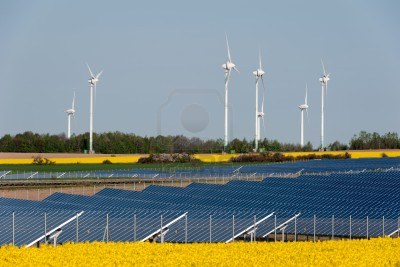Trends in The Global Wind Turbine Industry
The global wind turbine industry is going through another major turning point as margins have started to shrink sharply due to governments setting up new wind energy capacity usage rules. The world’s top two players Vestas and Gamesa-Siemens saw their recent quarterly results being hit hard by lower margins as prices of turbines went down sharply.
Governments across the world are now not giving away capacity at high PPAs but are allowing developers to build capacity using transparent reverse auction rules. This, in turn, is making developers squeeze their equipment suppliers which leads to lower prices and profitability. Latin American countries like Mexico and Brazil were the first ones to start this trend in wind capacity as they started to slowly build out their renewable energy capacities. Countries in North American and Europe have also started to follow this trend leading to lower prices for wind turbines.
Vestas saw a 20% q/q decline in its per MW wind turbine price, leading to 18% lower profits. Gamesa was also hurt steeply as one of its largest markets India started adopting reverse auctions for wind capacity allocation too. However, the silver lining to all this is that the volumes are growing as lower wind energy prices are making wind more competitive with other fossil fuel energy such as coal and gas. Wind energy has become the cheapest source of energy in many parts of the world now, thanks to technology improvements in rotors and blade technology. Larger and bigger wind turbines are leading to lower costs and prices. While less spectacular than solar energy, cost declines are happening in a significant way in wind turbines as well, and are expected to continue in the future with well-defined technology roadmaps of leading wind turbine companies.
Wind and solar energy have complementarities in the sense that they generate energy in different times of days and seasons. In many places, a hybrid wind and solar farm with small amounts of storage can act almost similar to a coal or a gas plant and at almost the same if not lower costs. Plus the more important thing is that it will have almost no carbon emissions and pollution effects.
Google+Siemens Gamesa Renewable Energy today presented its results. Regarding fiscal year 20171, revenue increased by 5% to €10,964 million, while underlying EBIT was €774 million (-18%) with an EBIT margin of 7%.Between April and September, revenues fell 12%, as a result of temporary suspension of the Indian market. Excluding this impact, revenues fell just 2%Order intake recorded a sharp increase in the fourth quarter to 3 GW, rising 40% and highlighting Siemens Gamesa competitive strengths
Source: Siemens-Gamesa News



